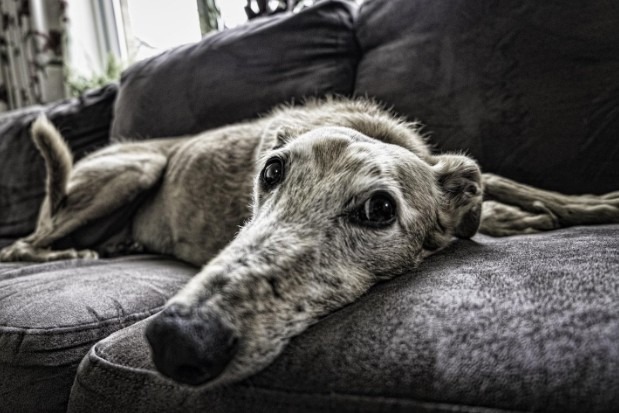Does your dog have an itch that won’t seem to stop? Learn five signs of skin allergies in dogs, as well as a simple solution for your canine’s itch.
Have you noticed that your pet is experiencing some skin irritation, and you don’t quite know what is causing the irritation? Typically, when a dog experiences skin irritations, it’s due to an allergic reaction, and just like humans, this reaction can cause undesired skin issues.
Continue reading this article to find out more information about the five signs of skin allergies in dogs. Knowing what to look for can allow you to catch the skin irritation early and seek the correct treatment to reduce that irritation.
Skin Allergies In Dogs
When a foreign substance enters the body, it interacts with the body’s immune system and creates a reaction. At times the reaction that is caused isn’t a positive one and is called an allergic reaction.
When the body is exposed to the allergen, the immune system begins to do what it can to fight the allergen, and this can cause adverse symptoms such as skin irritation. The following symptoms are signs that you’re dog may have a skin allergy.
1. Itching
It is not uncommon for dogs to scratch behind their ears every now and then. Still, if you begin to notice that your dog is scratching more than usual, you may want to pay special attention to this change in behavior. An allergic reaction can cause the skin to become dry and result in the need for your dog to scratch the dry skin.
Some of the areas that your dog may experience this increased itchiness may be in their behind, ears, paws, and face.
2. Inflamed Skin
When skin becomes irritated, it can also begin to become inflamed and show signs of agitation. The symptoms may be swelling in the affected area and a reddened appearance. The vet may prescribe some type of topical to ease the effects of the inflammation.
Or they may prescribe that you use a dog shampoo to soothe the skin read more here.
3. Hives
It is easier to identify that your dog has developed hives if they are a short-haired dog. If your dog is long-haired, you should take your hands and run them over the dog’s coat to feel for raised bumps on the skin.
You should seek immediate treatment for your dog’s hives. It will help to ensure that they are more comfortable as they continue to fight the allergic reaction they are having.
4. Stomach Issues
When a dog has an allergic reaction, they may begin to experience issues with their stomach, including vomiting and increased nausea. When your dog is suffering from an allergic reaction caused by food, the doctor may require that you change your dog’s diet.
This will reduce the likelihood that the food they eat causes more inflammation within their digestive system.
5. Shock
If an allergic reaction isn’t spotted in time, it can cause your pet to go into shock. The signs of this are difficulty breathing as well as the loss of bowel functions. This can happen after your pet has received a vaccination.
Therefore, it is recommended that you keep a close eye on your pet after vaccinations to ensure that they don’t experience any adverse reactions.
The Finale
Various things may cause skin allergies in dogs. Still, if you keep a close eye on their diet and their behavior, you may be able to soothe their skin irritation before it becomes overwhelming. If you want more information about your dog and other animals, check out our website.

